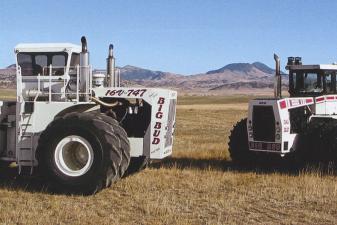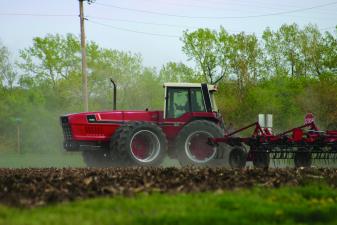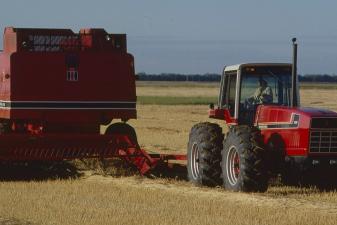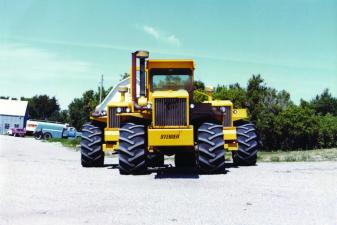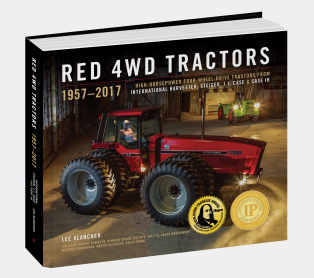Selling the 2+2

Does the 2+2 fascinate you? Then be sure to keep reading! After you're done, check out our title Snoopy and the Spy for an even more in-depth look at this tractor!
Ron Birkey’s family started an International Harvester dealership in 1954 in Fisher, Illinois. Ron worked for IH for a few years in the 1970s, and joined the family dealership in 1977. Birkey’s is one of the largest IH dealerships in America, and they have enjoyed a close relationship with people at IH. They often test new equipment, and also are a progressive, technology-forward dealership. They sold more 2+2 tractors than anyone in the country, and Ron explains why in this 2016 interview gathered while creating Red 4WD Tractors by Lee Klancher.
Ron Birkey: “[When the 2+2 came on the market], you had a lot of customers . . . trying to do their farming with very large two-wheel drive tractors.”
“They were trying to pull bigger and bigger implements and because they were pulling bigger implements that was obviously putting on heavier loads. They would turn the pumps up, they were putting more weights on the tractor to try to hold the tractor down to keep it from slipping. Whenever they would hold it down it maybe would cause too much compaction. They would add duals or triples.”
“Between the fluid in the tires and the weights that they were putting on and the increased horsepower we saw a tremendous destruction to drivetrains. On all brands. Some were more sturdy than others. Certainly all of them, we had tremendous amounts of shop work with tractor's engines blowing up because they turned up the horsepower, with transmissions and rear ends going out because of the extra loads. That was the problem that we faced at that time.”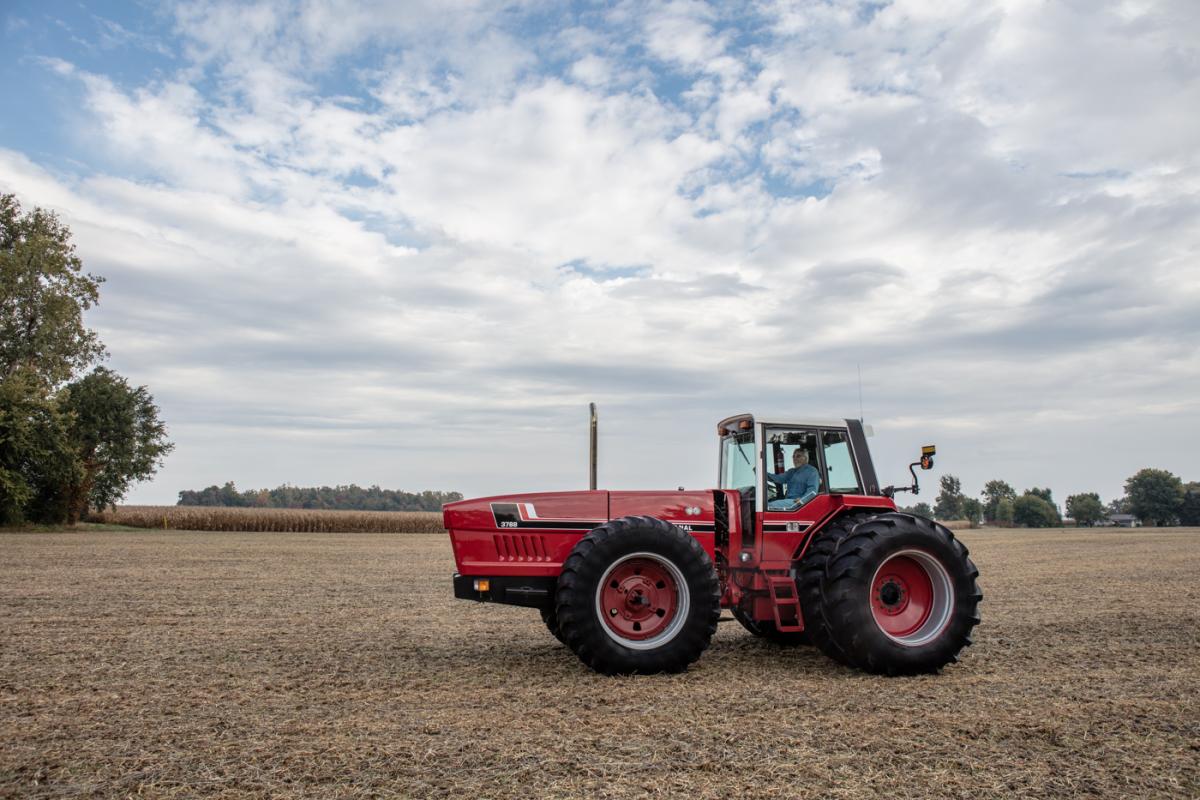
The 2+2 provided a perfect solution for Ron’s customers.
Ron: “Well, obviously, it was a smaller four-wheel drive tractor. It addressed the issues that I just laid out a minute ago about you had 25 percent slip in a regular two-wheel drive. This tractor had slippage in the range of 10 to 15 perecent. You cut that slippage in half. It had 54 percent of the weight was on the back axle and 46 percent in the front.”
“Now it wasn't a 50/50 distribution like your typical four-wheel drive tractors but part of that reason was they wanted to be able to operate the tractor from the back half of the tractor. Unlike a four-wheel drive tractor because you had implements in the back and you wanted to have better feeling of where your tractor was headed, if you're following me, and be closer to the implement and the different tools that you were pulling in the back planters and that sort of thing.”
“It was very impressive in that you could tell right away that your tractor wasn't slipping. Conceptually, the hardest thing I think for most dealers, and I think even the company at that time, I think they had something that they didn't bring to the marketplace as well as they should have in that what was actually going to happen here is when you went back to the dealership you have a customer that has that two-wheel drive, 25 percent slip, he's got that tractor pulling an implement with, let's say, a speedometer with a six mile an hour speed. Back then we didn't have radar. It was saying that you were going six mile an hour but if you think about it having a 25 percent slip you're really only going four and a half. If that makes sense. 75 percent of that. This was the hard concept.”
“If I take that same tractor with the same exact horsepower in a 2+2 and I only have 12.5 percent slip all of a sudden now the actual speed of that tractor in the six mile an hour speed gear is going to be going five and a quarter. I'm going to be going 5.25 miles per hour. It was very hard for the customers to look at that tractor and they thought, "Well, how much bigger implement am I going to pull?" I would immediately say, ‘Well, you're probably going to pull a smaller implement.’”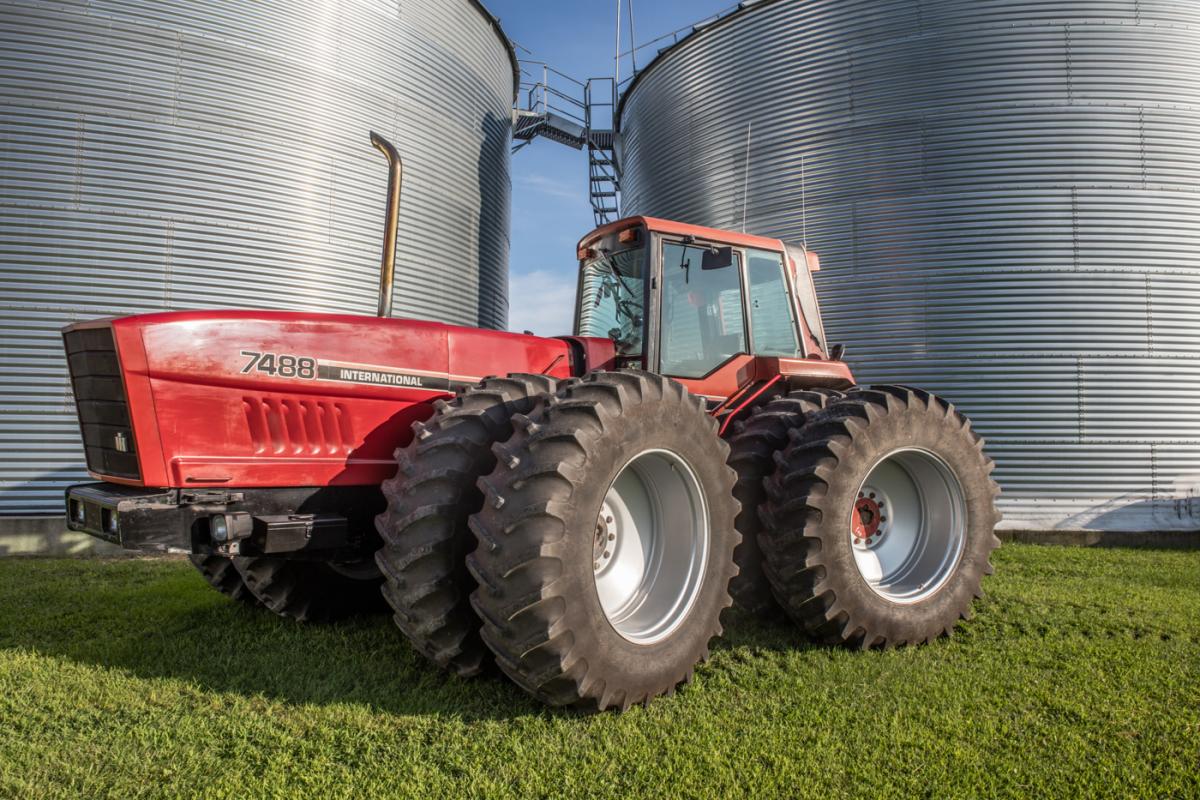
“They just thought I was crazy. I went through this whole thing that I just talked to you. I said, ‘Well, think about it this way. If you take your two-wheel drive tractor and you shifted it up to go a true five and a quarter mile an hour how would your tractor react?’ ‘Well, it couldn't pull it.’ I said, ‘Bingo, this tractor won't pull that either.’ You're either going to have to get a smaller implement or you're going to have to get into a gear that will pull you a true four and a half mile an hour.”
“That was a very hard concept. Again, we didn't have radar back then. That was probably a difficult selling point. We were real successful in selling that and understanding the limitations of the tractor. Or a better way to say it is understood the way in which you were going to provide that tractor an opportunity to perform. That was by sizing the implement [00:21:30] for the first time to the tractor.”
“The result of that would be that you would have increased traction. Obviously increased traction. You'd be able to move faster through the field, you would be lighter, and you'd pull it faster. You'd get more done at the end of the day with the smaller tool. You'd use less fuel per acre and less compaction, more efficiency. That whole concept, and we can go back and talk about all that and dissect that, but that was an extremely hard concept to get out there.”
“I can tell you from example after example that what we experienced with other dealers, and again the company guys, which I don't think really put their head around the best way to put this tractor in the field. They went out and tried to pull too big of a tool. They tried to put weights on it and weight it down. They turned the pumps way up, because they were trying to pull that same big tool they would turn the pump way up. Well, the tractor wasn't designed to do that. They missed the very first concept that I was talking about earlier. They didn't realize what they really had. If what I'm saying makes sense, we can go back and review that, but that in a nutshell is ... “
“We sold at Paxton's store, and certainly I was store manager at that time, but I was not the successful salesman. I was the store manager. My partner Bob Stalter sold 50 of those tractors. We sold more of those at that point in time than any dealer anywhere. Anywhere in the world they said. The success of it had to do with his sales ability I think but also our company and his ability to understand what that tractor could do and how you had to sell it, how you had to put it in the field. “
If you want to learn more about the 2+2, check out our title Snoopy and the Spy!
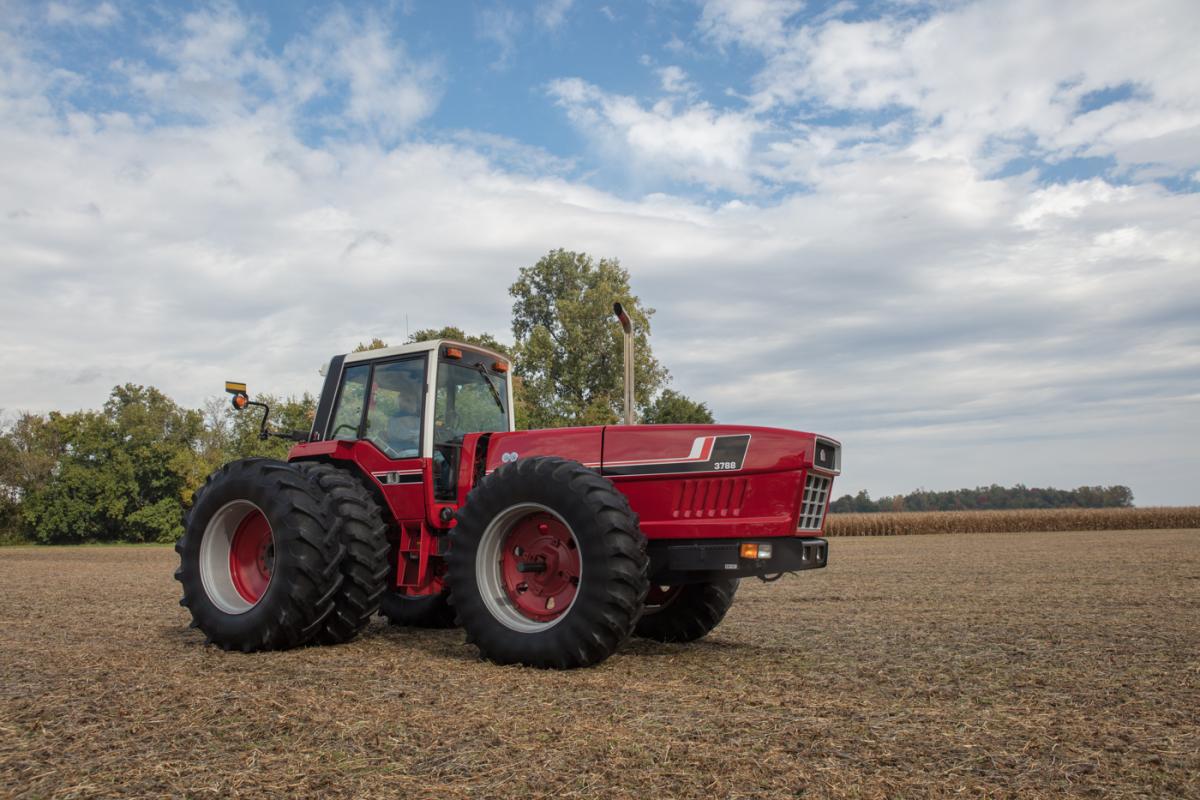
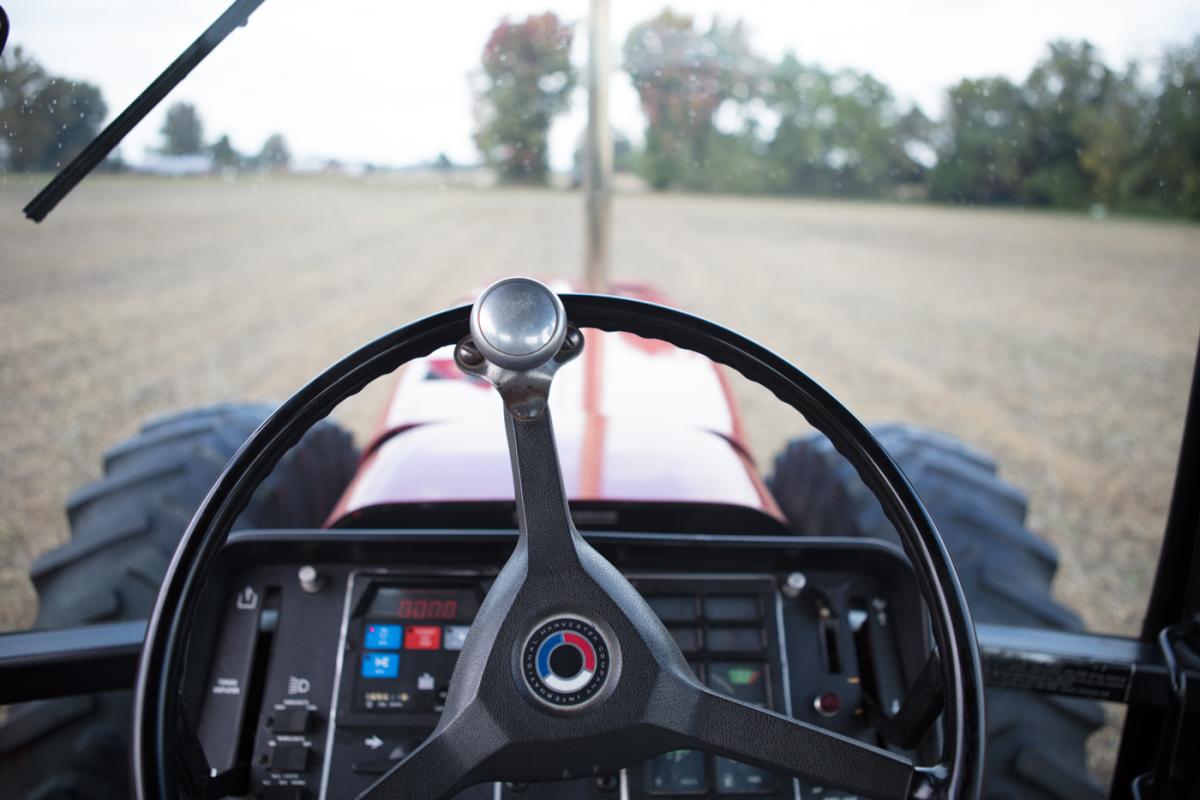
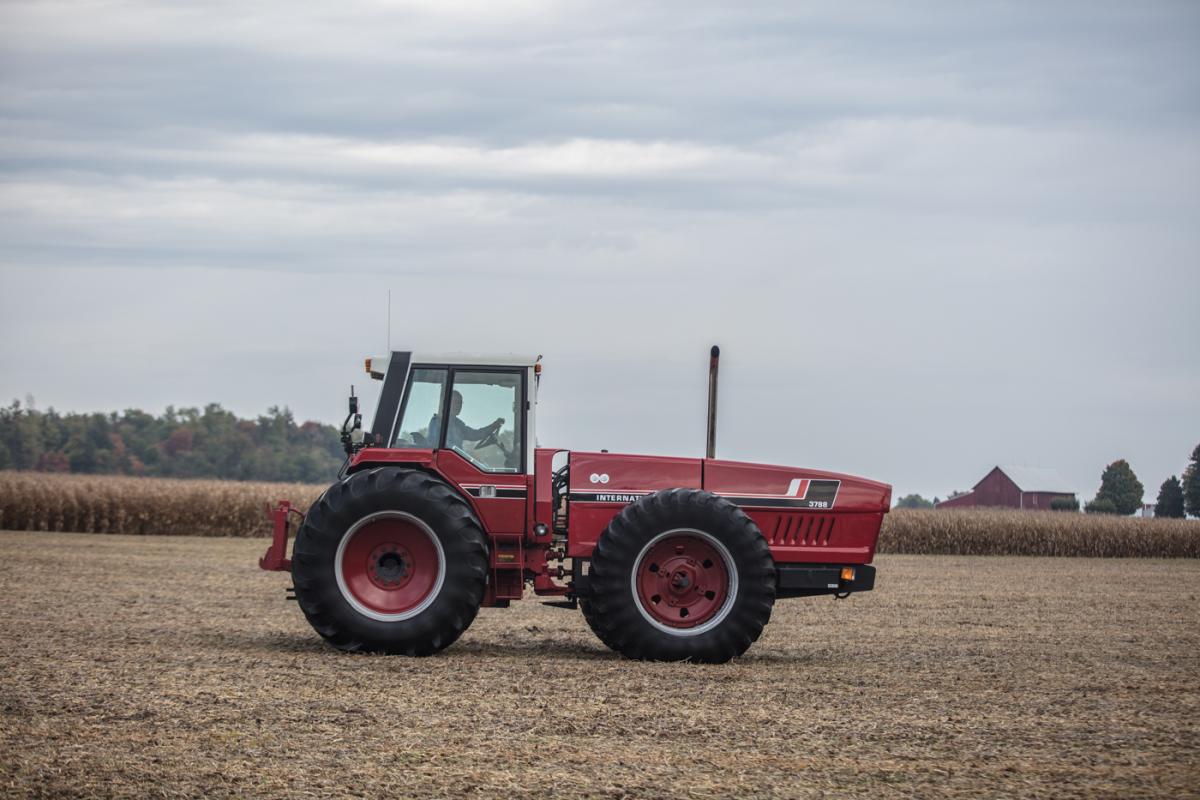
Photos by Lee Klancher


